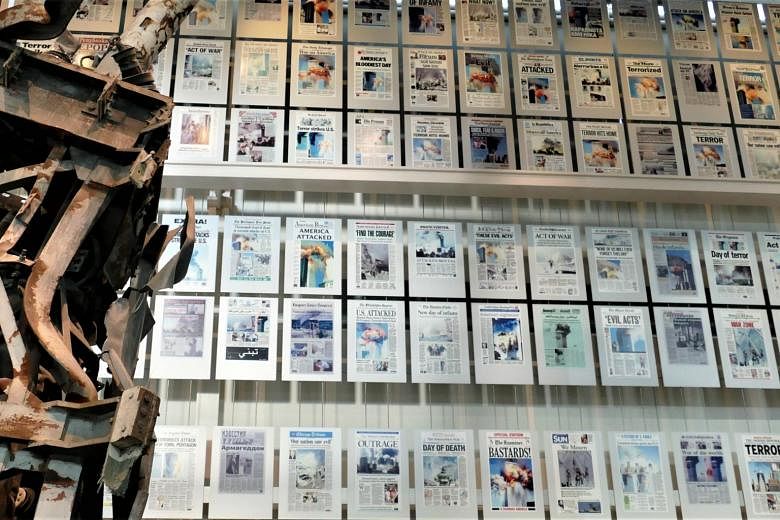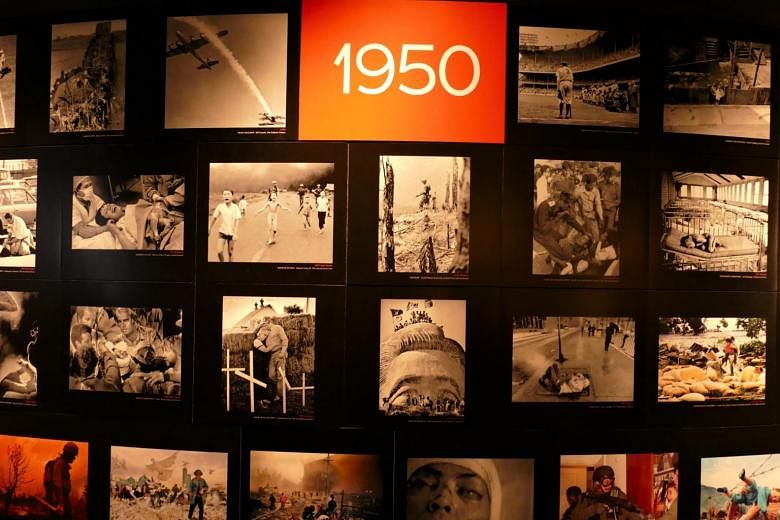WASHINGTON - The irony was palpable, as the lines for the Newseum formed around the block in its last few days.
The bespoke museum of journalism and the media, with a news helicopter suspended from its high ceiling, a chunk of the Berlin Wall, a grand view of the Capitol from its sunny high windows, and its wall full of front pages of American newspapers the morning after 9/11, shut its doors for the last time on Tuesday (Dec 31).
Essentially, it could not make ends meet.
Bad timing contributed. The Newseum's opening in 2008 coincided with an economic recession.
Newspapers were hit badly. Across America, newsrooms have been downsized, or newspapers have shut down.
Newspaper circulation in the United States has been declining for three decades.
In the past 15 years, more than 1,400 cities and towns across the US have lost a newspaper, according to an Associated Press analysis of data compiled by the University of North Carolina.
Charging a US$25 (S$33.80) entry fee in a city where iconic museums are free, did not help.
Many saw the closure - though some hope for a reincarnation at some propitious time at a different location - as symbolic of the demise of whatever is in the bins deemed "legacy media" and fact-based discourse.
Also, unlike the free museums - including the National Gallery of Art and several Smithsonian museums - and the National Zoo, the Newseum did not get any funding from Congress.
The building at 555 Pennsylvania Avenue, with a giant tablet for a wall with the First Amendment inscribed on it, has been sold to Johns Hopkins University for US$372.5 million (the wall will be removed).
The university has submitted plans to turn it into a state of the art education centre.
Mr Ken Paulson, a former president of the Newseum, called the closure "a major disappointment to so many who care deeply about freedom of the press".
Several visitors who spoke to The Straits Times expressed similar sentiments.
Many were there for the first time. They paused at the bullet-riddled pick-up truck used by Time photographers in the former Yugoslavia, took pictures of the bullet- and cannon-fire-holed street sign from the airport road to Sarajevo.
They paused at the memorial to slain journalists. They perused Pulitzer Prize-winning photographs from famines, wars, revolutions and crackdowns.
Some wrote messages, saying what cause they would fight for, on Post-it notes and stuck them on a wall.
"It is important for us to remember what it means to have freedom of the press and differences of opinions" visitor Theresa Kaiser told ST.
The 55-year-old lived in Washington for 25 years, and now lives in Michigan. She and another, Australian Anthony Jarvis, were visiting the Newseum for the second day in a row.
Mr Jarvis, 59, said as they both queued to get in on Dec 30 afternoon: "I think it holds a particular history of reporting and truth telling, which I think I haven't seen anywhere else, which will be lost when this closes."








